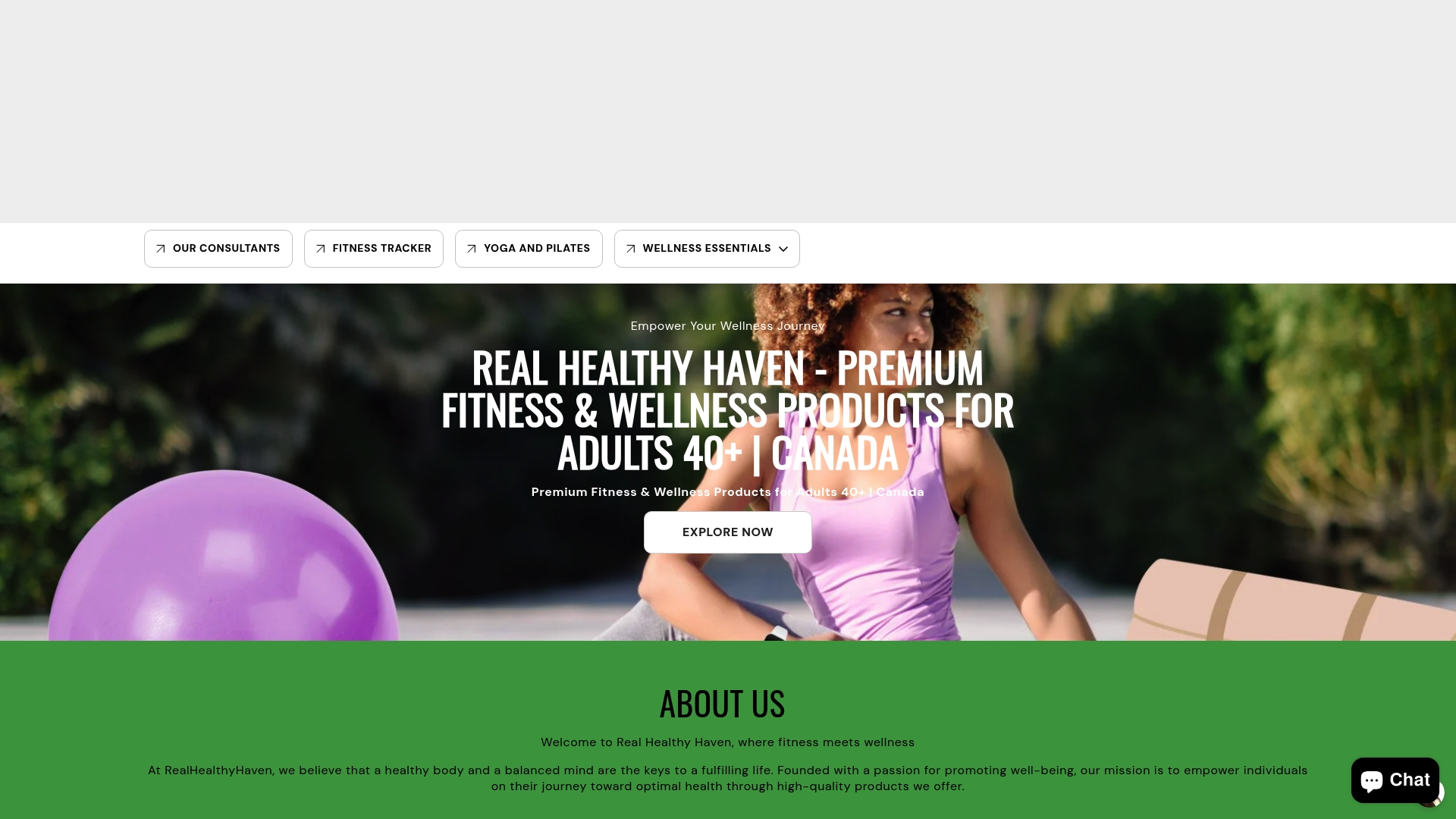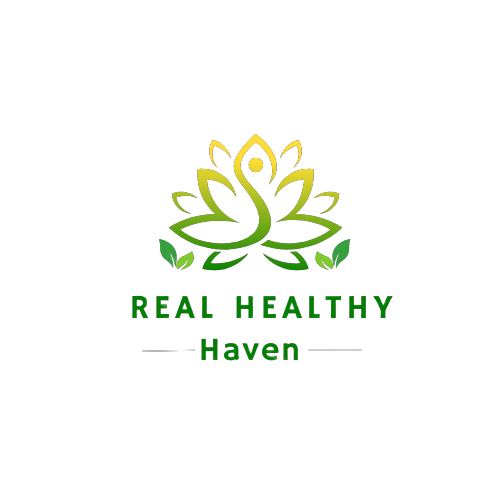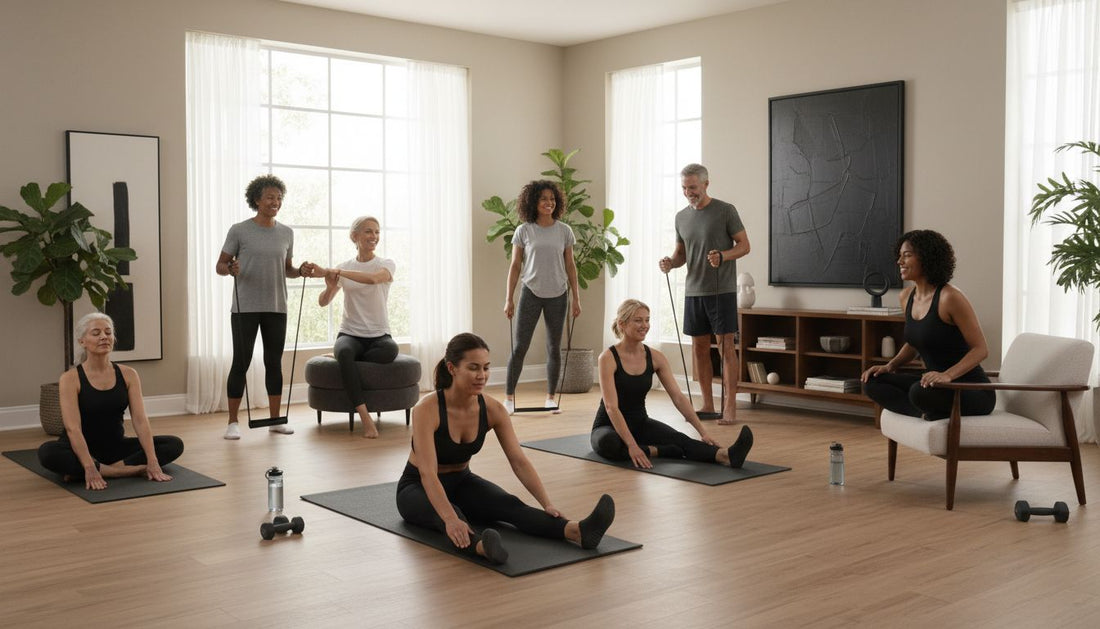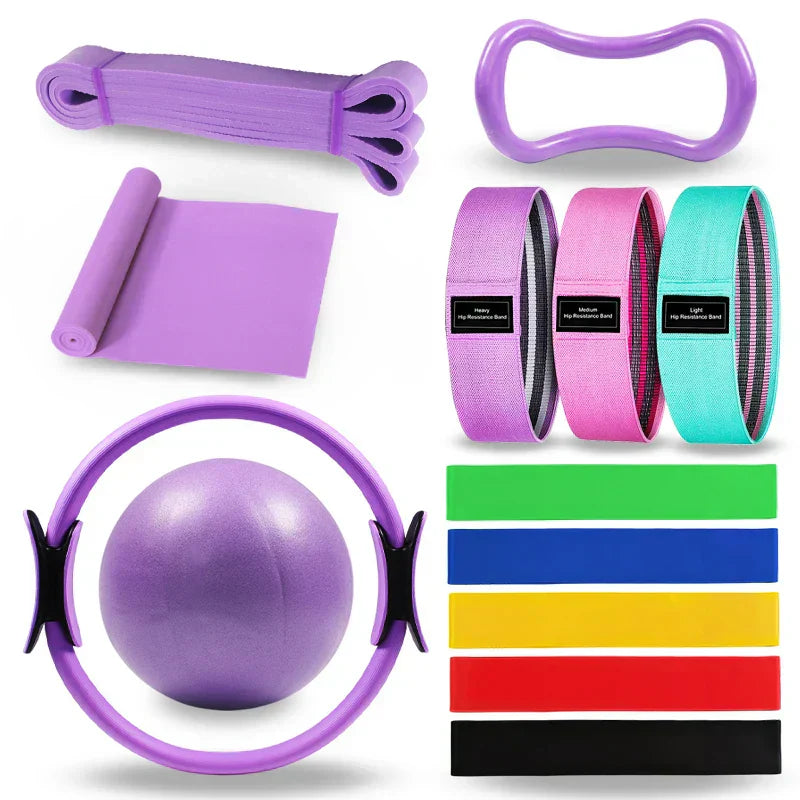Nearly one in four adults over 40 experiences a fall each year, yet simple exercises can make a big difference. Staying mobile and strong becomes more challenging as we age, but even gentle movement builds resilience and helps maintain independence. This guide reveals practical routines that support flexibility, heart health, balance, and overall confidence, with easy options for every comfort level.
Table of Contents
- 1. Gentle Full-Body Stretching for Daily Mobility
- 2. Low-Impact Cardio with Step-Ups and Marching
- 3. Strength Training Using Resistance Bands
- 4. Balance and Stability Moves for Fall Prevention
- 5. Core Strength with Safe Floor Exercises
- 6. Chair Workouts for Extra Support and Comfort
- 7. Relaxation and Mindfulness with Guided Home Yoga
Quick Summary
| Takeaway | Explanation |
|---|---|
| 1. Daily stretching improves flexibility and mobility. | Dedicating 10-15 minutes daily to stretching can enhance muscle suppleness and joint movement, reducing stiffness. |
| 2. Low-impact cardio is essential for heart health. | Engaging in low-impact exercises like step-ups and marching minimizes joint stress while boosting cardiovascular fitness. |
| 3. Resistance bands effectively build strength safely. | Using resistance bands promotes muscle preservation and strengthens joints, making it suitable for older adults. |
| 4. Balance training is vital for fall prevention. | Regular balance exercises decrease the risk of falls and increase confidence in mobility among older adults. |
| 5. Chair workouts offer safe exercise alternatives. | Chair exercises support strength-building and mobility for those preferring seated options, especially during rehabilitation. |
1. Gentle Full-Body Stretching for Daily Mobility
As we journey through our 40s and beyond, maintaining flexibility becomes a cornerstone of staying active and independent. Gentle full-body stretching offers a powerful way to keep your muscles supple, joints mobile, and overall movement smooth.
According to research from Johns Hopkins Medicine, targeted mobility exercises can significantly reduce fall risks and improve balance in older adults. By dedicating just 10-15 minutes daily to stretching, you can dramatically enhance your physical resilience and prevent age-related stiffness.
Why Stretching Matters for Adults Over 40
Your body changes naturally with age. Muscles become less elastic, joints stiffen, and recovery takes longer. Regular stretching counteracts these physical shifts by:
- Improving joint range of motion
- Reducing muscle tension
- Enhancing blood circulation
- Supporting better posture
- Decreasing injury risk
Practical Stretching Routine
Start with gentle movements that target major muscle groups. Begin standing or seated, depending on your comfort level. Warm up with light arm circles, neck rotations, and ankle rolls. Focus on slow, controlled movements without bouncing or straining.
As Harvard Health recommends, consistency trumps intensity. A few mindful stretches performed regularly will yield more benefits than occasional aggressive workouts.
Pro tip: Always listen to your body. Stretching should feel like a gentle pull, never painful. If something hurts, modify the stretch or skip it entirely.
2. Low-Impact Cardio with Step-Ups and Marching
Cardiovascular fitness does not require intense jumping or running. For adults over 40, low-impact cardio offers an excellent way to maintain heart health, boost energy, and improve overall fitness without stressing your joints.
According to Harvard Health, cardio exercises can be adapted to suit different fitness levels, making them accessible for mature adults seeking sustainable workout routines.
Understanding Low-Impact Cardio
Low-impact cardio focuses on movements that keep at least one foot on the ground, minimizing joint stress while providing excellent cardiovascular benefits. Step-ups and marching in place are perfect examples of exercises that deliver significant fitness advantages with minimal strain.
Benefits of Low-Impact Cardio
This approach to exercise provides numerous advantages:
- Increases heart rate without excessive joint pressure
- Improves cardiovascular endurance
- Supports weight management
- Enhances overall mobility
- Boosts metabolic function
Simple Step-Up and Marching Routine
Begin with a stable platform like a sturdy step or bottom stair. Start with marching in place to warm up, lifting knees to a comfortable height. Gradually introduce step-ups, alternating legs and maintaining a steady rhythm.
Key technique points include:
- Keep your core engaged
- Maintain an upright posture
- Move at a pace that allows comfortable breathing
- Use a support if needed for balance
Aim for 10-15 minutes initially, gradually increasing duration as your fitness improves. Remember, consistency matters more than intensity. Your body will thank you for steady, gentle movement.
3. Strength Training Using Resistance Bands
Strength training does not require heavy weights or gym equipment. Resistance bands offer a versatile, joint-friendly approach to building muscle and maintaining strength as you age.
Exercise is Medicine Canada emphasizes the importance of resistance training for maintaining muscle mass and overall functional fitness. These lightweight elastic bands provide adjustable tension that can be modified to suit your fitness level.
Why Resistance Bands Matter
As we age, muscle mass naturally declines a process called sarcopenia. Resistance band training helps counteract this by:
- Preserving muscle strength
- Improving joint flexibility
- Enhancing balance and stability
- Reducing injury risk
- Supporting bone density
According to the British Columbia Medical Journal, resistance exercises are crucial for fall prevention and maintaining mobility in older adults.
Getting Started with Resistance Bands
Choose bands with varying resistance levels. Start with lighter bands and progressively increase tension as you build strength. Focus on controlled movements that target major muscle groups like legs, arms, chest, and back.
Sample Resistance Band Exercises
Begin with simple movements:
- Seated leg extensions
- Chest presses
- Bicep curls
- Shoulder rotations
- Standing row exercises
Aim for 2 3 sets of 10 15 repetitions. Always warm up first and listen to your body. Proper form matters more than the number of repetitions. If something feels uncomfortable, modify the exercise or consult a fitness professional.
4. Balance and Stability Moves for Fall Prevention
As we age, maintaining balance becomes crucial for independence and safety. Balance exercises are not just about staying upright they are about protecting your mobility and confidence.
Johns Hopkins Medicine highlights that targeted balance training can dramatically reduce fall risks for adults over 40. Falls are not an inevitable part of aging they can be prevented with consistent practice.
Understanding Balance Challenges
Multiple factors contribute to balance issues as we get older:
- Muscle strength decline
- Reduced flexibility
- Vision changes
- Inner ear modifications
- Medication side effects
Practical Balance Training Techniques
Start with simple yet effective movements. The sit-to-stand exercise is particularly powerful. Practice rising from a chair without using your hands. This builds leg strength and improves overall stability.
According to the Fall Prevention Foundation, consistent balance training can reduce fall risks by up to 40 percent.
Essential Balance Moves
Incorporate these exercises into your routine:
- Single leg stands
- Heel to toe walking
- Heel raises
- Standing knee lifts
Always have a stable surface nearby for support. Begin with short practice sessions of 5 10 minutes. Progress gradually. Wear supportive shoes and choose a clear space free from obstacles.
Remember balance is a skill you can improve. Patience and consistent practice are your best allies in maintaining mobility and preventing falls.
5. Core Strength with Safe Floor Exercises
Your core is more than just abdominal muscles it is the powerhouse that supports every movement you make. For adults over 40, developing core strength becomes critical for maintaining balance, preventing injuries, and supporting daily activities.
According to the British Columbia Medical Journal, targeted core exercises can significantly improve overall stability and reduce fall risks.
Why Core Strength Matters
A strong core provides numerous benefits:
- Improves posture
- Reduces lower back pain
- Enhances balance and stability
- Supports easier movement in daily life
- Prevents potential injuries
Safe Core Exercise Strategies
Harvard Health recommends gentle floor exercises that build strength without excessive strain. The key is performing movements slowly and with control.
Beginner Core Exercises
Start with these foundational movements:
- Supine bridges
- Modified planks
- Opposite arm and leg raises
- Gentle abdominal contractions
Important technique tips: Use a comfortable mat, move slowly, and stop if you feel pain. Begin with short sets of 5 10 repetitions. Breathe steadily and maintain proper form.
Pro tip: Always listen to your body. Modifications are perfectly acceptable. If a full movement feels challenging, try a partial version or use support. Consistency matters more than intensity.
6. Chair Workouts for Extra Support and Comfort
Fitness does not require standing or complex movements. Chair workouts offer a perfect solution for adults seeking safe, supported exercise that builds strength and maintains mobility.
Stanford Medicine highlights chair exercises as an ideal option for individuals wanting low impact fitness routines that improve balance and overall physical function.
Benefits of Seated Exercise
Chair workouts provide multiple advantages:
- Reduce fall risk
- Improve muscle strength
- Enhance flexibility
- Support joint mobility
- Build confidence in movement
Why Chair Workouts Work
According to Johns Hopkins Medicine, seated exercises can be particularly effective for adults managing balance challenges or recovering from injuries.
Effective Chair Exercise Techniques
Start with simple movements that target major muscle groups:
- Seated leg extensions
- Arm circles
- Ankle rotations
- Seated side bends
- Shoulder shrugs
Key technique tips: Use a sturdy chair without wheels. Maintain good posture. Move slowly and breathe steadily. Begin with 10 15 repetitions of each exercise.
Pro tip: Always have water nearby. Listen to your body and rest when needed. Consistency matters more than intensity. If an exercise feels uncomfortable, modify or skip it.
7. Relaxation and Mindfulness with Guided Home Yoga
Yoga is not just about complex poses it is a holistic practice that nurtures both body and mind. For adults over 40, guided home yoga offers a gentle pathway to improved flexibility, balance, and mental well being.
A groundbreaking study from the National Center for Biotechnology Information reveals that yoga interventions can significantly improve functional capacities such as gait, strength, flexibility, stability, and balance in older adults.
Understanding Yoga Benefits
Yoga provides comprehensive wellness advantages:
- Enhances physical flexibility
- Reduces stress
- Improves mental clarity
- Supports joint health
- Boosts overall balance
Getting Started with Home Yoga
Harvard Health recommends incorporating yoga into daily routines as an effective strategy for maintaining mobility and preventing falls.
Beginner Friendly Yoga Practices
Start with gentle practices:
- Seated breathing exercises
- Chair yoga poses
- Simple stretching sequences
- Mindful meditation techniques
- Balance focused movements
Pro tip: Use online guided videos designed for mature adults. Begin with 10 15 minute sessions. Wear comfortable clothing. Always have a stable surface nearby for support. Listen to your body and modify poses as needed. Consistency matters more than perfection.
Below is a comprehensive table summarizing the key exercise strategies and benefits discussed throughout the article.
| Exercise Type | Implementation | Benefits/Outcomes |
|---|---|---|
| Full-Body Stretching | Gentle stretching of major muscle groups for 10-15 minutes daily. | Enhances mobility, reduces stiffness, improves posture. |
| Low-Impact Cardio | Step-ups and marching in place, start with 10-15 minutes. | Boosts heart health, improves endurance, low joint stress. |
| Resistance Training | Use resistance bands for exercises like leg extensions and curls. | Builds muscle strength, supports bone density, improves balance. |
| Balance Exercises | Practice moves like single leg stands and heel raises regularly. | Reduces fall risk, enhances stability, increases confidence. |
| Core Strength Exercises | Perform floor exercises such as planks and leg raises slowly. | Improves balance, reduces back pain, supports daily movement. |
| Chair Workouts | Seated movements like leg extensions and arm circles. | Enhances strength, reduces fall risk, supports joint mobility. |
| Guided Yoga Practices | Engage in seated breathing and simple stretching sequences. | Boosts flexibility, reduces stress, improves balance. |
Elevate Your Home Workouts for Healthy Aging Today
Struggling with stiffness or balance as you age is a common challenge that gentle stretching, low-impact cardio, strength training, and balance exercises can help solve. The article shares practical ways to maintain mobility and prevent falls with simple daily routines tailored for adults over 40. If you want to take your fitness journey further with supportive products designed for your needs, explore our carefully curated range of workout essentials, health monitors, and comfortable activewear to move confidently and comfortably.

Discover how you can enhance your strength and stability with equipment and wellness supplies specifically for mature adults at Real Healthy Haven. Act now to enjoy free shipping across Canada and access expert advice that supports your journey to safe, effective home workouts. Start building resilience and independence today by visiting our store and exploring resources that turn simple exercises into lasting lifestyle improvements.
Frequently Asked Questions
What are some simple home workouts for adults over 40?
Gentle stretching, low-impact cardio, resistance band training, and chair workouts are excellent options. Start with 10–15 minutes daily of stretching and gradually incorporate other exercises for well-rounded fitness.
How can I avoid injury while doing home workouts?
Focus on controlled movements and listen to your body. Warm up for a few minutes before starting any exercise and stop if you feel pain to prevent injuries.
What is a beginner-friendly core exercise I can do at home?
The supine bridge is an effective core exercise suitable for beginners. Lie on your back with your knees bent, lift your hips, and hold the position for 5–10 seconds, repeating 5–10 times to build strength.
How often should I include balance exercises in my routine?
Aim to practice balance exercises at least 2–3 times a week to maintain stability and reduce fall risks. Incorporate simple activities like single-leg stands for 5–10 minutes each session.
Can chair workouts really be effective for strength training?
Yes, chair workouts can build muscle and improve mobility without the risk of falling. Perform seated leg extensions and arm circles for 10–15 repetitions, focusing on controlled movements.
How do I get started with home yoga for relaxation and flexibility?
Start with gentle practices like seated breathing exercises and chair yoga poses. Dedicate at least 10–15 minutes each day to yoga to improve flexibility and mental well-being.



